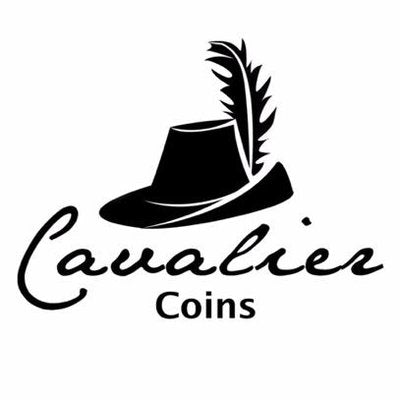Your Guide To 1948 Half Crown Coin Values
The value of a 1948 half crown coin really boils down to its condition. In worn grades, you might see less than £1, while a flawless, uncirculated piece can fetch over £7. Since over 71 million struck coins circulate, rarity isn’t the driver here—state of preservation is.
Think of grading a coin like judging fruit. A well-used half crown is a bruised apple—still recognizable, but lacking its original snap. On the other hand, an uncirculated specimen shines like a perfect, just-picked apple, every detail crisp and intact.
Before we dive deeper, here’s a handy at-a-glance table summarising how condition affects value:
Quick Guide to 1948 Half Crown Values by Grade
| Coin Grade | Description | Estimated Value Range (£) |
|---|---|---|
| Poor (P) | Heavy wear, most design elements faded | Less than 1 |
| Good (G) | Noticeable circulation marks, main details clear | £1–£2 |
| Very Fine (VF) | Light wear, strong details remain | £2–£4 |
| Extremely Fine (EF) | Minor wear on high points, sharp overall | £4–£6 |
| Uncirculated (UNC) | No wear, full lustre, immaculate surfaces | Over £7 |
Use this quick guide to spot where any 1948 half crown falls on the grading spectrum.
The Key Drivers Of Value
While most coins owe their worth to scarcity, the 1948 half crown is different. A massive mintage of 71,164,703 pieces makes this issue common—but high-grade survivors are rare. Here’s what really moves the needle:
- Condition (Grade): The single most crucial factor. Each step up in grade can multiply the coin’s value.
- Rarity in High Grades: Pristine examples slipped through circulation far less often, making them sought after.
- Collector Demand: Enthusiasts of King George VI and post-war history keep these pieces in steady demand.
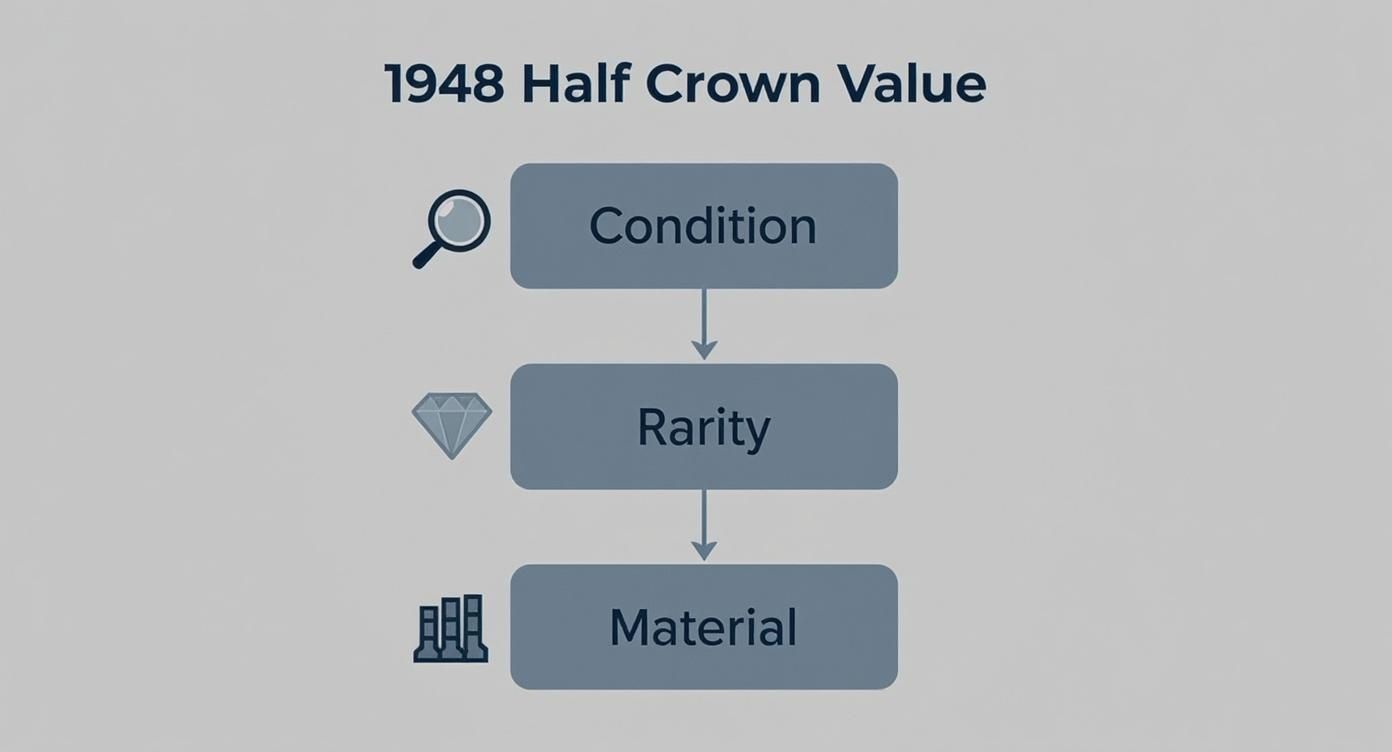
This visualisation clearly shows that condition sits at the top of the hierarchy, followed by high-grade scarcity and material considerations. Understanding this hierarchy is the first step in learning how to value coins accurately.
Identifying 1948 Half Crown Coins
Before you can get a handle on what a 1948 half crown is worth, you first need to be sure that's what you're holding. It's a bit like learning to spot a classic car; once you know the key features, it instantly stands out from the crowd. With a little guidance, you’ll soon be able to pick out every detail with confidence.
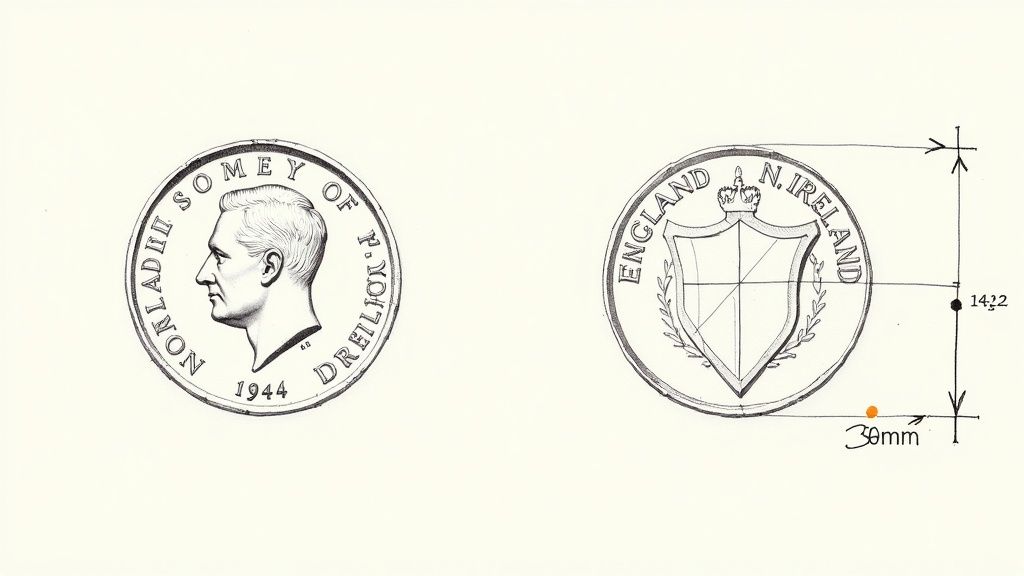
This coin is a small piece of post-war British history, and its design and materials tell a story. Getting familiar with these elements is the essential first step before you can even think about its grade or potential value.
The Obverse: The King's Portrait
The "heads" side of the coin, which collectors call the obverse, features a striking portrait of King George VI. The design is the work of artist Humphrey Paget, and if you look closely, you might spot his tiny initials 'HP' tucked away just below the King's neck.
You'll notice the King isn't wearing a crown. This was a deliberate choice, intended to project a more modern, forward-looking monarchy after the turmoil of the Second World War. Circling the portrait is the inscription, written in abbreviated Latin: 'GEORGIVS VI D:G:BR:OMN:REX'. This translates to "George VI, by the Grace of God, King of all the Britons".
The Reverse: A Royal Coat of Arms
Flip the coin over to its "tails" side, or reverse, and you'll find a powerful symbol of national identity. Designed by George Kruger-Gray, it displays a large, quartered shield showing the Royal Arms of the United Kingdom.
Think of this shield like a family crest on a suit of armour. Each section has a specific meaning:
- Top-left and bottom-right: Three lions, walking and facing the viewer, which symbolise England.
- Top-right: A lion rampant (rearing up), which represents Scotland.
- Bottom-left: A harp, the historic emblem of Ireland.
This design was a proud statement, communicating the unity of the home nations during a period of immense national recovery.
The Coin's Physical Specifications
Beyond the pictures, the 1948 half crown has very precise physical details that help confirm what it is. The switch from silver to a new alloy a year earlier, in 1947, was a direct result of Britain's post-war economic struggles.
The crucial thing to remember is that the 1948 half crown contains no silver. Its value is purely numismatic, driven by a collector's interest in its condition and history, not by the metal it's made from.
Here are the key specs you can check yourself:
- Composition: Cupro-nickel (75% copper, 25% nickel)
- Weight: 14.14 grams – about the same as three modern £1 coins.
- Diameter: 32.3 mm – making it a little larger than a modern £2 coin.
- Edge: Reeded – it has those fine vertical grooves all the way around its rim.
You don't need any fancy equipment for this. A simple set of kitchen scales can confirm the weight, and a standard ruler is all you need to measure the diameter. By checking these features, you can be certain you've correctly identified your 1948 half crown before moving on to the next step: assessing its condition.
Grading 1948 Half Crown Coins
You can't really get a handle on the value of a 1948 half crown without first understanding its grade. Grading is just a standardised way of describing a coin's condition, and for a common coin like this one, it's the single most important factor driving its price. The difference in value between a battered, well-travelled piece and a perfect one is absolutely enormous.
Think of it like an old, faded photograph versus a brand-new, high-definition print. Both show the same image, but the crispness and detail of the new one make it far more desirable. A coin that's passed through thousands of hands will look soft and worn—almost like a well-used doorknob—while an uncirculated example still has that sharp, striking detail it had the day it left the Royal Mint.
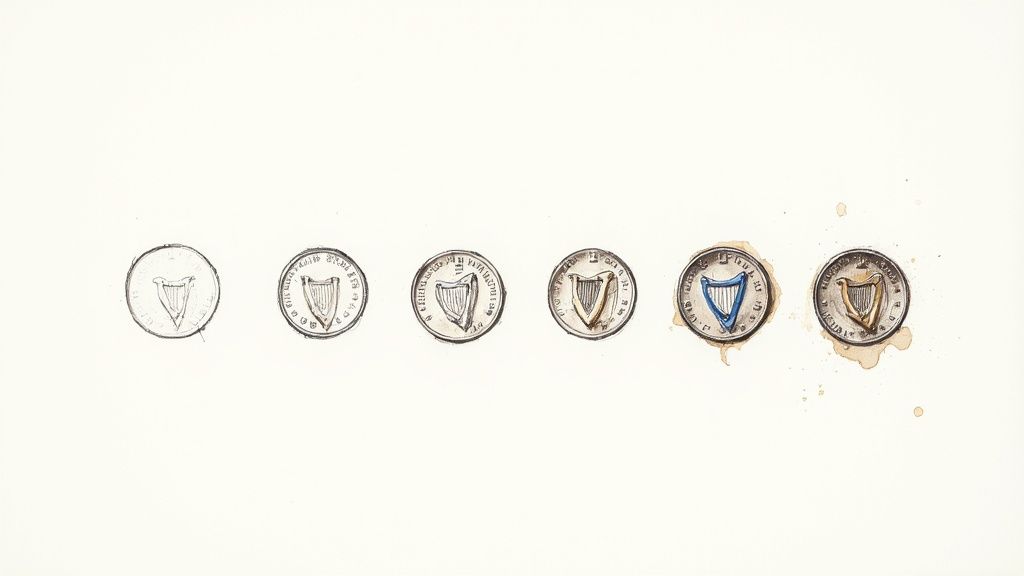
It’s this journey from a heavily circulated coin to a pristine, untouched specimen that creates such a massive range in value. Learning to spot the subtle differences between grades is the key to assessing your own collection accurately.
The Grading Scale From Poor to Uncirculated
Coin grading isn't random; it follows a recognised scale that moves from the lowest quality right up to perfection. Each step up represents a visible improvement in how well the coin has been preserved, which directly translates to a higher value.
Let's walk through the main grades you're likely to come across with a 1948 half crown:
- Poor (P) / Fair (F): A coin at this level is extremely worn. You can make out the main designs, but they're flat and have no fine detail left. The lettering around the rim might even be partially worn away. These coins have little to no collector value, maybe just a few pence.
- Good (G): A 'Good' grade means the coin has seen a lot of action. The portrait of King George VI and the shield on the back are clear, but the important details—like the King's hair or the intricate lines inside the shield—are completely smooth.
- Very Fine (VF): Now we're getting somewhere. A VF coin shows light, even wear on the highest points, but a lot of the design is still sharp. You can start to see some of those finer details coming back into view.
- Extremely Fine (EF): This coin has barely been in circulation. Wear is really only visible on the very highest points of the design. It has a strong, clear look, and you can still see most of its original mint lustre.
- Uncirculated (UNC): This is the pinnacle. An Uncirculated coin is a perfect specimen with absolutely no signs of wear. It looks exactly as it did when it was freshly minted, complete with its full original lustre. These are the rarest and most valuable examples by far.
Key Inspection Points For Accurate Grading
You don't need a high-powered microscope to grade your coin properly; you just need to know where to look. It's the highest points of a coin's design that show wear first, so these are your primary targets.
For the 1948 half crown, there are three critical areas to inspect:
- The King's Hair: On the front (obverse), look closely at the hair just above King George VI's ear. An Uncirculated coin will show distinct, sharp hairlines. As the coin wears down to EF and then VF, these lines will start to flatten and merge.
- The Shield Edges: Flip it over to the reverse and check the raised borders of the shield and the lines that divide its quarters. On a high-grade coin, these edges are sharp and well-defined. On a lower-grade coin, they'll look soft and rounded.
- The Harp Strings: Peer at the small harp in the bottom-left part of the shield. A coin in EF condition or better will show clear, individual harp strings. By the time it's a VF, these strings will start to blur into a single shape.
The sharpness of these specific details is what separates a coin worth £2 from one worth over £7. Mastering how to spot this wear is the most important skill you can develop for figuring out 1948 half crown coin values. For a more detailed breakdown, our complete coin grading guide for beginners and experts is an excellent place to start.
When To Seek Professional Grading
While learning to grade your own coins is a fantastic skill, there are times when a professional opinion is a must. If you think you have an exceptionally high-grade coin—especially one that looks Uncirculated—getting it professionally graded can be a real game-changer.
Companies like PCGS or NGC will authenticate, grade, and seal your coin in a protective plastic slab. This service offers some major advantages:
- Authentication: It's a guarantee that the coin is genuine.
- Standardised Grade: It gives the coin an official, universally accepted grade.
- Increased Buyer Confidence: People are willing to pay significantly more for a professionally graded coin because its quality is certified and undisputed.
Of course, getting a coin graded costs money, so it’s not worth it for common, circulated examples. But for a potential top-tier 1948 half crown, that certification can dramatically boost its final sale price, making it a very smart investment if you're looking to sell.
Factors That Increase 1948 Half Crown Value
Beyond the standard wear and tear you see on a coin, several other factors can turn a common 1948 half crown into something a collector will genuinely get excited about. Because it's made from cupro-nickel, there's no precious metal value to fall back on. This means the real fun—and the value—is all in the details. The price for these coins is driven entirely by collector demand, which is often sparked by rarity and unique little quirks.
Think of it like this: the Royal Mint churned out millions of these coins, like identical bricks in a massive wall. But every now and then, a brick was formed with an odd crack, a strange colour, or a special history. These are the ones collectors will happily pay a premium to own, elevating an ordinary coin into a special piece.
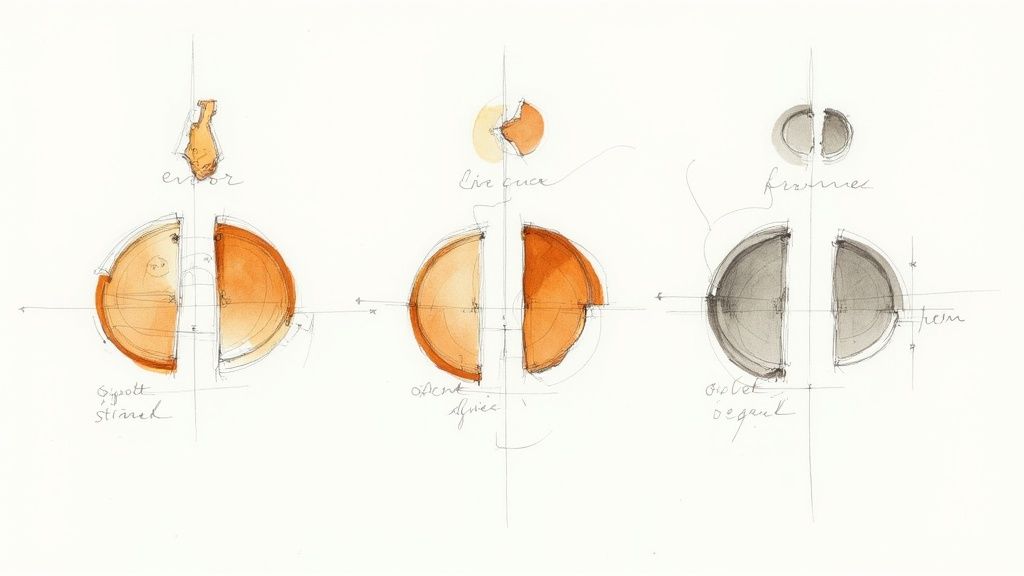
Getting to grips with these value-adding factors is the key to spotting a hidden gem in a pile of old change. Let’s break down the elements that can really push up the value of a 1948 half crown.
Minting Errors and Varieties
Minting errors are the happy accidents of coin production, and they can create tremendous value for collectors. They’re a bit like a misprinted stamp—an imperfection that makes an otherwise common item rare and desirable. For the 1948 half crown, here are the main errors to keep an eye out for:
- Die Cracks and Cuds: A die crack happens when the mould used to strike the coin develops a fracture, which leaves a raised, zig-zagging line on the coin's surface. A "cud" is even more dramatic; this is when a piece of the die actually breaks off, resulting in a raised, unstruck blob of metal on the coin.
- Off-Centre Strikes: This is exactly what it sounds like. The coin blank wasn't perfectly lined up with the dies when it was struck. The design is noticeably off-centre, leaving a crescent of blank space on one side. The more off-centre it is, the more valuable the error becomes.
These little variations break the uniformity of the 71.17 million coins minted that year, making them stand out. A serious collector might have a dozen perfectly normal 1948 half crowns, but an example with a clear die cud is a real prize.
The Importance of Provenance
Provenance is simply the documented history of a coin's ownership. While it’s pretty rare for a common date coin like the 1948 half crown, a great backstory can add significant appeal and, in turn, value.
Imagine finding a 1948 half crown tucked away in an old box with a handwritten note saying it was the first coin a famous collector ever acquired. If that story could be verified, the coin is no longer just a piece of cupro-nickel; it's an artefact with a narrative. That link to a well-known collection gives it a historical weight that sets it apart from the rest.
A coin with a documented history, especially one linked to a famous collection or a significant event, carries an intangible value that goes far beyond its physical grade. Provenance turns an object into a story, and collectors are often willing to pay a premium for that story.
While most 1948 half crowns won't have a formal paper trail, any original packaging, old notes, or even solid family history can add a layer of interest that might just tempt the right buyer.
Eye Appeal: Toning and Strike Quality
It’s entirely possible for two coins of the very same grade to have completely different values. The deciding factor? Eye appeal. This is a subjective but absolutely critical element that describes how pleasing a coin is to look at.
- Toning: This is the natural colour a coin picks up over decades due to its environment. For a cupro-nickel coin, this can range from a dull, unattractive grey to beautiful, warm amber or golden shades. A coin with even, attractive toning is far more desirable than one with ugly, patchy spots or dark discolouration.
- Strike Quality: The "strike" refers to how well the design was stamped onto the coin blank during minting. A sharp, crisp strike is like a brand-new banknote—every single detail is bold and clear. A weak strike, even on an Uncirculated coin, will have soft, mushy details, making it less appealing to the eye and therefore less valuable.
Think of two identical paintings. One is rendered in vibrant, clear colours, while the other is muted and blurry. Even if both are undamaged, the crisp, vibrant one will always fetch a higher price. The very same principle applies to coins, where great eye appeal can add a hefty premium to its market value.
1948 Half Crown Market Trends and Auction Results
Understanding a coin's book value is a great start, but the real story unfolds when you see what collectors are actually willing to pay. The market for the 1948 half crown is a fascinating tale of two extremes, driven almost entirely by one thing: condition.
For every handful of circulated coins that change hands for just a few pounds, a pristine, untouched example can fetch hundreds of times more. Why the huge gap? Millions were minted and pushed into circulation, but very few survived the journey without the inevitable scrapes, dings, and general wear of daily life.
It's a bit like a classic car. A well-loved model with a few miles on the clock is a wonderful piece of history. But one that’s been kept in a garage under a dust sheet since it left the factory? That’s a rare and valuable find. This scarcity at the top end of the grading scale is what really fuels the market. Collector demand for coins from King George VI's reign holds steady, as it represents a significant post-war era in British history. This keeps 1948 half crown coin values stable at the lower end and highly competitive for top-tier specimens.
From Pocket Change to Collector's Prize
To really see this divide in action, let's look at some real-world sale prices.
A typical 1948 half crown in Very Fine (VF) condition—one that has clearly been used but still has decent detail—will often sell for between £2 and £4. You'll find these on platforms like eBay or at local coin fairs. They're a fantastic, affordable way for new collectors to own a genuine piece of history.
But as we climb the grading ladder, the story changes fast. An Extremely Fine (EF) coin, with much sharper details and a hint of its original mint lustre, can push the price up to £4 to £6. Once you hit Uncirculated (UNC) territory, where the coin looks as fresh as the day it was struck, the value jumps again, often starting at £7 and climbing much higher depending on its eye appeal.
Of course, the ultimate prizes are the Proof versions. These coins were never meant for your pocket; they were struck using specially polished dies to create a flawless, mirror-like finish for collectors. Finding a 1948 Proof half crown is incredibly rare, and their prices reflect that.
Landmark Auction Results
To give you a clearer picture of how condition impacts price, here’s a look at some recent auction results. The table below shows what buyers have recently paid for 1948 Half Crowns in various grades.
1948 Half Crown Auction Price Examples
| Coin Grade | Condition Details | Recent Auction Price (£) | Auction House/Platform |
|---|---|---|---|
| VF (Very Fine) | Noticeable wear, major details still clear | £3.50 | eBay UK |
| EF (Extremely Fine) | Light wear, sharp details, some lustre | £6.00 | The Coin Cabinet |
| UNC (Uncirculated) | No wear, full mint lustre, minor bag marks | £12.00 | London Coins |
| Proof (FDC) | Flawless mirror fields, frosted devices | £1,190 | Stack's Bowers |
As you can see, the jump from a circulated coin to a top-grade Proof is staggering. That record-setting sale in January 2011 at a Stack’s Bowers auction for £1,190 truly cemented this coin's status as a serious collector's item when found in perfect condition. You can discover more insights about these auction results and what they mean for the coin's future.
The market sends a clear message: while a circulated 1948 half crown is a common historical artefact, a top-grade or Proof example is a genuine numismatic rarity. Its value isn’t in the cupro-nickel alloy but in its incredible story of survival against all odds.
Selling And Buying 1948 Half Crown Coins
Stepping into the market for a 1948 half crown feels a bit like choosing between a lively country fair and an elegant numismatic gallery. Sellers want to showcase their coins to the right crowd. Buyers, meanwhile, simply need to know they’re paying a fair price.
For most vendors, the choice boils down to global auction sites such as eBay or specialist dealers. Picture eBay as that bustling village fair where footfall drives bidding wars. Specialist dealers, by contrast, curate your coin in a quieter setting, putting it under the spotlight for serious collectors.
Tips For Sellers
- Use Quality Lighting: Shoot under soft, diffused lamps to reveal true lustre without harsh glare.
- Provide Accurate Descriptions: Mention grade, natural toning and any minting quirks.
- Research Comparable Sales: Study recent auction results to set a competitive starting price.
- Offer Flexible Shipping: Include tracked, insured options to build buyer confidence.
- Time Your Listings Smartly: Weekends and weekday evenings often see the highest activity.
Putting these pointers into action transforms advice into real value. For a deeper look at selling strategies, see How To Sell A Coin.
Strategies For Buyers
- Inspect slab ratings closely and confirm certification authenticity.
- Review recent auction archives to map out fair market ranges.
- Compare coins under neutral light to spot cleaning or polishing marks.
- Ask for high-res close-ups of key areas, especially the king’s hair and shield edges.
- Negotiate politely, backing your offer with documented sale prices and grades.
“Never clean your coin; improper cleaning can destroy its numismatic value,” advises veteran numismatist Alice Thompson of Cavalier Coins Ltd.
These tactics help you sidestep common pitfalls and bid with confidence.
Do’s And Don’ts
- Do store coins in acid-free holders to prevent corrosion.
- Do wear cotton gloves when handling high-grade specimens.
- Do keep an eye on demand trends before committing to a purchase.
- Don’t clean your coin with abrasive materials—toning tells its story.
- Don’t accept vague authenticity claims—always request slab grading.
- Don’t rush; compare multiple sources and take your time.
A clear set of actions like this can save you from costly mistakes down the line.
Checklist To Prepare Your Coin
| Step | Action |
|---|---|
| 1 | Verify weight and diameter using a calibrated scale and ruler |
| 2 | Photograph both obverse and reverse under diffused lighting |
| 3 | Document any toning or minting errors with close-up images |
| 4 | Double-check slab certifications and grading labels |
| 5 | Write a concise description that highlights key features |
| 6 | Select the platform best suited to your target buyer |
Whether you’re listing a single 1948 half crown for charity or hunting for a pristine specimen to add to your collection, these steps will guide you to success. Mix careful preparation, honest communication and a dash of market insight, and every transaction becomes an opportunity to learn and profit.
Resellers can unlock discounts through bulk listings on specialist platforms, while charities will find donors more generous when coins are presented with transparent condition reports. Above all, clear communication builds lasting trust.
Frequently Asked Questions
What makes the 1948 Half Crown different from earlier issues?
The biggest change is what it's made of. The 1948 Half Crown is a cupro-nickel coin, a switch from the silver used in earlier years, reflecting Britain's post-war economy. You'll also notice the portrait of George VI is a fresh design, showing him without a crown, a subtle symbol of a more modern, forward-looking monarchy.
How can I tell if my coin is a proof or a standard strike?
It all comes down to the finish. Proof coins are special presentation pieces and really stand out. They have incredibly shiny, mirror-like backgrounds (the 'fields') and the design itself has a contrasting frosted look. Standard coins, even uncirculated ones, have a more uniform, satin-like lustre across the whole surface.
- Check for deep, reflective, mirror-like surfaces in the background.
- Look for a sharp, almost cameo-like contrast between the background and the raised design.
True proof examples of this coin are exceptionally rare, with a tiny mintage believed to be under 1,000 strikes worldwide.
Seasoned collectors know that proof coins often have subtle tells, like unique die polish lines or tiny minting codes that you just don't see on the standard uncirculated coins.
Where is the best place to sell a high-grade specimen?
For a top-quality coin, you want to get it in front of serious buyers. Specialist auction houses and established numismatic dealers are your best bet as they have a dedicated client base of collectors actively looking for premium coins. Online marketplaces can work, but you're often dealing with more casual buyers, and the fees can take a big bite out of your final return.
- Numismatic auction houses connect you directly with targeted, knowledgeable collectors.
- A good specialist dealer can often handle the entire process, including grading and insurance.
Can I clean my coin to improve its appearance?
Absolutely not. Please, never take abrasives or chemical dips to a historic coin. You might think you're making it shinier, but you're actually stripping away its original surface and destroying its numismatic value. A bit of natural, residual toning can often add character and actually increase its appeal and price in the market.
How do I confirm my coin's authenticity?
You can do a few simple checks at home. A genuine 1948 Half Crown should weigh 14.22 grams and measure 32.3 mm in diameter. You'll need a precise digital scale and callipers for this. Also, take a close look at the reeded edge pattern and compare your coin against high-quality images from trusted reference guides or online archives.
- Use a digital scale accurate to at least 0.01 g.
- Use callipers to get an exact diameter measurement.
Additional Resources
For more general questions about collecting or for details on other coins, you might find it helpful to explore frequently asked questions.
Ready to trade your 1948 Half Crown? Visit Cavalier Coins Ltd at https://www.cavaliercoins.com
